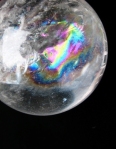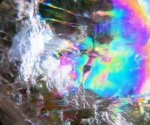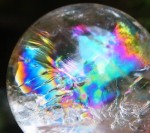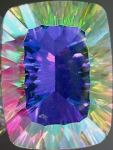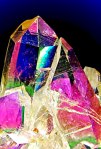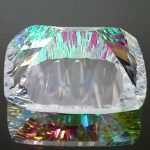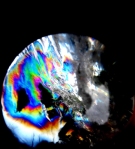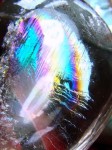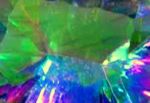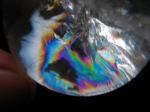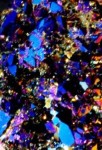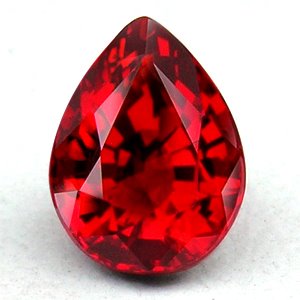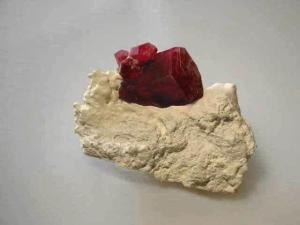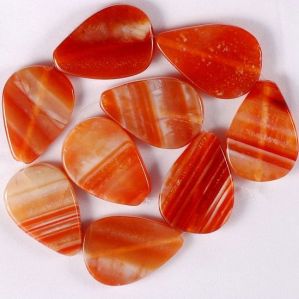Category Archives: JASPER
01/01/2010 JASPER-The First Foundation Stone
JASPER
-a quartz as “clear as crystal”
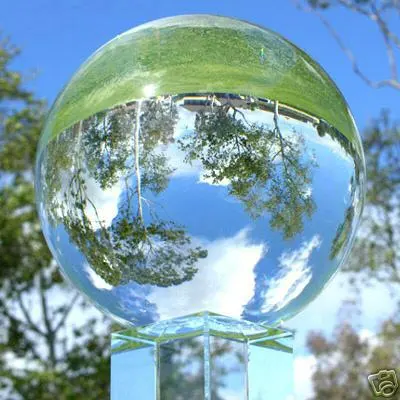
JASPER
THE FIRST FOUNDATION OF THE NEW CITY-SCENE VII
Personal Note:
Please note that the information listed is derived from many sources and research regarding the stones is ongoing. It is difficult to use information of our current times when in biblical times that information may have been different (note the post regarding Emeralds when it is posted).
Obtaining the stones for the New City was my first endeavor when initiating supplies needed for the painting. I focused on the “bible” names and nothing more. When I began soliciting for and collecting stones from all over the world, I took their literal “bible” meaning. Jasper is an excellent example of the confusion and controversy I began to face.
Jasper is noted to be mainly reds and browns most commonly. There are banded and spotted in nearly all colors. I imagined the stone used was red, perhaps banded with browns, blacks and yellow/whites as it was the most commonly seen stone with research. There were blues (ocean jasper) which were magnificent but rare. I wondered if the blue was the correct stone to use in order to illuminate the heavenly blue colors of God’s New City.
It was not until several years later I realized my error! I had been collecting the wrong color all along. I had read Revelation so many times and missed what I now understand jasper to be. I began to research the stones from ancient times, scientifically, geologically, metaphysically and any way to develop a true understanding of exactly what each stone signifies.
As I have previously stated: “I am not religious but I am learning”, and in that growth I tried to walk a mile in another “man’s” shoes to find out exactly what was on God’s mind when he mastered the architecture of his New City. I imagine the plan was to mark HIS New City with HIS glory which SHINES like the sun. What a better stone to use to crown HIS glory!
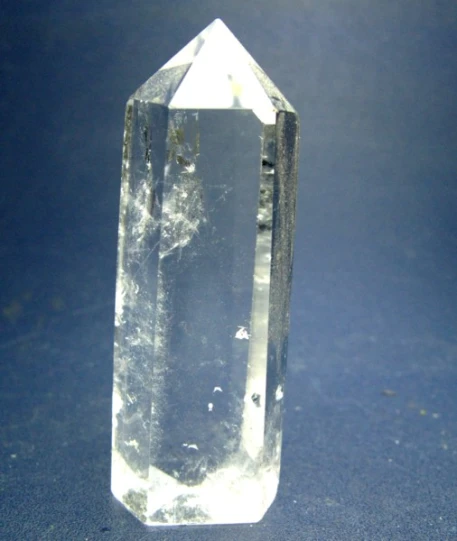
Referring to God and The New City from various biblical text:
-
Rev. 4:3 And he that sat was to the sight like the jasper and sardine stone
-
Rev. 4:6 …and before the throne there was something like a sea of glass, like crystal…
-
Rev. 21:11 Having the glory of God, and the light thereof was like to a precious stone, as to the jasper stone, even as crystal… (SECOND TRANSLATION: …having the glory of God. … brilliance was like a very costly stone of crystal-clear jasper.)
-
Rev. 21:23 And the city hath no need of the sun, nor of the moon to shine in it. For the glory of God hath enlightened it, and the Lamb is the lamp thereof.
FACTS REGARDING JASPER:
-
Quartz is divided into two types:
-
Macrocrystalline-Crystals are visible with the unaided eye.
-
Cryptocrystalline-A microscope is required to see the individual crystals.
-
Jasper is quartz of the cryptocrystalline type that can be of two distinct types; micro granular and fibrous.
-
Quartz makes up 12% of the earth’s crust. (ODDLY ABUNDANT-REMEMBER THAT WHEN READING ABOUT THE STONES IN VARIOUS BLOGS. A MYSTERY OF REVELATION WILL BE REVEALED IN THE BLOG SHORTLY BEFORE THE PAINTING IS UNVEILED 12/2010 WHICH WILL CHANGE HISTORY~!)
-
As the most abundant mineral on earth, quartz and jasper are found all over the world.
-
Jasper is often multicolored, banded or spotted and is commonly found in reds and browns.
-
Has long been used as tools for hardness; spears and axes.
-
Helps cure liver, intestinal ailments, stomach, gynecological, and cleanse the body of toxins.
-
The stone was once believed to cure insanity with God’s help, and heal demon possessed.
-
Egyptians placed amulets on the deceased as jasper was believed to create a safe passage in death.
-
Protective, calming, offers stability, and balances the emotional and intellectual.
-
Known as “the great rain bearer” in the fourth century.
-
Origin of the name Jasper is Greek: iaspis.
-
Brings happiness, aids in sleep, protective properties.
Major sources of Jasper include:
Venezuela, Germany, North Africa, Brazil, Canada, United States, Madagascar, Russia, Ural Mountains, India, Sicily, France, Egypt, Uruguay, Australia, Kazakhstan
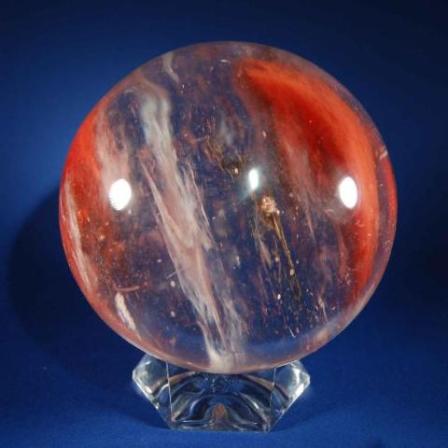
As the stones are found nearly all over the world, sometimes we do not see the world, the people and only value the worth of the stones. Learning about different people and cultures not only creates a “worldly or cultured person”, it also creates a deeper understanding of life, the people in it, promotes unity, and makes the world an overall better place to live.
Venezuela

The Culture of Venezuela is product of a very rich and diverse set of cultural traditions. A sort of melting pot culture has been created by wide influences, from the original American Indians to the Spanish and Africans who arrived after the Spanish conquest. Then 19th century and 20th century immigration brought many Italians, Portuguese, Arabs, Germans, and others from the bordering countries of South America. About 85% of Venezuelans live in urban areas in the northern part of the country. Although almost half of the land area is south of the Orinoco River, only 5% of the population live in that area. About 95% of the population call themselves Roman Catholic. The rest belong to other churches, mainly the Protestant church. Read more at: http://en.wikipedia.org/wiki/Culture_of_Venezuela

http://www.venezuelanalysis.com/news/1784
VENEZUELA
History and Culture
In ancient times, Venezuela was paradise for the Indians who lived on its beaches, in its tropical forests, and on the gentle grassland of the llanos. There were three main groups: the Carib, Arawak, and the Chibcha. They lived in small groups and all of them practiced some degree of farming; the land, however, was bountiful enough so that this was not always a necessity. They could easily hunt, fish for, and gather their food. The most advanced of the three were the Chibcha who lived on the eastern slopes of the Andes. Though they never developed large cities, their agricultural skill were formidable: they terraced parts of the Andes and built sophisticated irrigation channels to water their crops.
llanos. There were three main groups: the Carib, Arawak, and the Chibcha. They lived in small groups and all of them practiced some degree of farming; the land, however, was bountiful enough so that this was not always a necessity. They could easily hunt, fish for, and gather their food. The most advanced of the three were the Chibcha who lived on the eastern slopes of the Andes. Though they never developed large cities, their agricultural skill were formidable: they terraced parts of the Andes and built sophisticated irrigation channels to water their crops.
Christopher Columbus was the first European to visit Venezuela. He came in 1498 during his third voyage to the New World, and landed on the Peninsula de Paria. Following the coast, he explored the Rio Orinoco Delta and concluded that he had found much more than another Caribbean island. More explorers came a year later, and it was Alonso de Ojeda who gave the country its name. Arriving at Lake Maracaibo, he admired the stilted houses that the Indians had build above the lake and called the place Venezuela – “Little Venice.” A year after that the Spanish established their first settlement, Nueva Cadiz, which was later destroyed by a tsunami. Early colonization in Venezuela was much less rampant than it was in other parts of South America, and the colony was ruled with a loose hand from Bogota. It was much less important to the Spanish than the mineral-producing colonies of Western South America, but Venezuela would later surprise the world when massive oil reserves would be discovered.
Venezuela may have been a quiet outpost on the edge of the Spanish Empire, but it gave birth to the man who would one day turn that empire on its head: Simon Bolivar. With the help of British mercenaries, Bolivar and his followers campaigned against the Spanish tirelessly, marching across the Andes and liberating Colombia in 1819, Venezuela in 1821, and Ecuador, Peru, and Bolivia in 1825. Much of his army was composed of native Venezuelans. Independence did not prove easy for the new nation. Civil strife, wars, and dictatorships raged in the country well into the next century. Though some dictators sought real reform, most milked their positions for personal gain. Border disputes with the British colony of Guyana erupted in the 1840s, and although they never boiled over into full-fledged warfare, Venezuela still disputes the border to this day.
mercenaries, Bolivar and his followers campaigned against the Spanish tirelessly, marching across the Andes and liberating Colombia in 1819, Venezuela in 1821, and Ecuador, Peru, and Bolivia in 1825. Much of his army was composed of native Venezuelans. Independence did not prove easy for the new nation. Civil strife, wars, and dictatorships raged in the country well into the next century. Though some dictators sought real reform, most milked their positions for personal gain. Border disputes with the British colony of Guyana erupted in the 1840s, and although they never boiled over into full-fledged warfare, Venezuela still disputes the border to this day.
In the early 1900s, the conflict-ridden nation finally began to get on its economic feet with the discovery of oil, and by the 20s Venezuela was beginning to reap the benefits. Unfortunately, most of the wealth remained with the ruling class, and the plague of dictators continued until 1947 when Romulo Betancourt led a popular revolt and rewrote the constitution. The first president-elect in Venezuela’s history took office the same year, the novelist Romulo Gallegos. Unfortunately, he was ousted by another dictator and the country did not experience a non-violent presidential succession until 1963. For the next 25 years, things went comparatively well. An oil boom in the mid-1970s saw enormous wealth pour into the country, though, as always, the vast lower class benefited little. Oil prices dropped in the late 80s and once again the country was thrown into crisis. Riots swept through Caracas and were violently repressed, and two coup attempts took place in 1992. Right now, the nation’s stability and future are uncertain.
 Despite a rough history, Venezuelans are infamous in South America for their easy-going nature and fun-loving spirit. Their national mythology hails back to the days when independent and rugged settlers tamed the lawlessness of the llanos, a heritage not unlike that of the American West. Most Venezuelans them come from a mix of European, Indian, and African roots, while a minority are exclusively white, black, or Indian. Roman Catholicism is the overwhelmingly dominant religion.
Despite a rough history, Venezuelans are infamous in South America for their easy-going nature and fun-loving spirit. Their national mythology hails back to the days when independent and rugged settlers tamed the lawlessness of the llanos, a heritage not unlike that of the American West. Most Venezuelans them come from a mix of European, Indian, and African roots, while a minority are exclusively white, black, or Indian. Roman Catholicism is the overwhelmingly dominant religion.
http://www.geographia.com/Venezuela/index.htm
http://www.geographia.com/indx05.htm For more information regarding Latin America. As much a Caribbean country as it is a South American anchor, Venezuela is unique. At night, the capital of Caracas comes to life with the rhythms of the Caribbean. The nation also has a few geographical superlatives, including the world’s highest waterfall and South America’s biggest lake.
Germany

It is the world’s largest beer festival, is held annually in Munich, Germany, has spread across Europe and the Rest of the World and is now celebrated globally. The Oktoberfest tradition started in 1810 to celebrate the October 12th marriage of Bavarian Crown Prince Ludwig to the Saxon-Hildburghausen Princess Therese. All of the residents of Munich were invited to celebrate the marriage in the surrounding fields. The celebrations lasted five days and ended with a horse race.

Federal Republic of Germany (German: Bundesrepublik Deutschland, is a country in Central Europe. It is bordered to the north by the North Sea, Denmark, and the Baltic Sea; to the east by Poland and the Czech Republic; to the south by Austria and Switzerland; and to the west by France, Luxembourg, Belgium, and the Netherlands. The territory of Germany covers 357,021 square kilometers (137,847 sq mi) and is influenced by a temperate seasonal climate. With 81.8 million inhabitants in January 2010, it has the largest population among member states of the European Union, and it is also home to the third-largest number of international migrants worldwide. More information: http://en.wikipedia.org/wiki/Germany

Population: 81,338,000 (July 1995 estimate) with growth rate of 0.26 percent (July 1995 estimate).
Ethnic Groups: 95.1 percent German, 2.3 percent Turkish, 1.7 percent Italian, 0.4 percent Greek, and 0.4 percent Polish; remainder mainly refugees from former Yugoslavia.
Languages: Standard German, with substantial differences in regional dialects. Three very small linguistic minorities, which speak Serbian, Danish, or Frisian.
North Africa
North Africa or Northern Africa is the northernmost region of the African continent, linked by the Sahara to Sub-Saharan Africa. Geopolitically, the UN definition of Northern Africa includes the following seven countries or territories; Algeria, Egypt, Libya, Morocco, Sudan, Tunisia, and Western Sahara.
The Spanish plazas de soberanía (exclaves) are on the southern coast of the Mediterranean Sea, surrounded by Morocco on land….The distinction between Northern Africa and the rest of Africa is historically significant because of the effective barrier created by the Sahara. Throughout history this barrier has culturally separated the North from the rest of Africa and, as the seafaring civilizations of the Phoenecians, Greeks, Romans and others facilitated communication and migration across the Mediterranean, the cultures of North Africa became much more closely tied to Southwestern Asia and Europe than Sub-Saharan Africa.
The inhabitants of North Africa are generally divided in a manner roughly corresponding to the principal geographic regions of North Africa: the Maghreb, the Nile Valley, and the Sahara. Northwest Africa on the whole is believed to have been inhabited by Berbers since before the beginning of recorded history, while the eastern part of North Africa has been home to the Egyptians. Ancient Egyptians record extensive contact in their Western desert with peoples that appear to have been Berber or proto-Berber.
CARTHAGENIAN FLANK STEAK
How North African can you get?
INGREDIENTS:
1 cup onion, finely chopped
1 tablespoon chopped garlic
1/2 cup olive oil
1/2 cup lemon juice
2 tablespoons soy sauce
1 tablespoon dry sherry
1/4 cup fresh oregano
2 teaspoons hot sauce
1 teaspoon tumeric
1 teaspoon dried marjoram
Salt and pepper
1 (2-pound) flank steakSet a jumbo zip lock bag in a large glass measure. Combine all the ingredients in the plastic bag. Score the flank steak and place in the bag. Seal the bag and chill. Marinate at least 20 minutes and up to overnight.
Heat a grill or grill pan. Remove the flank steak from the bag and pat dry. Grill 4 to 5 minutes per side. Let rest 5 to 10 minutes before carving. Serves 4
For more about food: http://www.thegutsygourmet.net/africa.html

http://allafrica.com/
FRANCE
 http://fr.mapsofworld.com/france/
http://fr.mapsofworld.com/france/

France, the second largest country in Europe, is known for its rich and varied culture. France has the English Channel to its north and the Mediterranean Sea and the Bay of Biscay to its south. The country is hexagonal in shape and is surrounded by Italy, Spain, Belgium, Andorra and Switzerland.
The culture of France has evolved through various centuries, and what we see today, is the amalgamation of the cultures of various ancient civilizations. These include the Greeks, Celtics, Romans, etc. The culture of this country is influenced by the neighboring countries, and also by various historical events that took place. France has in turn contributed in the development of cultures of other nations in the areas of fashion, modern art and cinema.
Language
French is the official and most widely spoken language of France. People of France consider French as the most important part of their cultural identity. French is also a popular language in other parts of the world. It also possesses 75 different regional languages like Flemish, Italian, Basque, Breton, Catalan, Occitan dialects, etc. Among these, the Catalan dialect is a largely spoken regional language, and is found in the French Pyrenees. The Constitution of France recognizes all these regional languages and are even taught in schools as a second language, in the areas where they are spoken.
Religion
Christianity (catholicism), is the religion followed by majority of people in France. However, it is not the only religion, and France is tolerant towards different religions as people from various religious and ethnic backgrounds live in France. This secular country has people following religions like Islam, Buddhism and Judaism. Protestantism is also followed by some of them.
Arts and Literature
France is considered as the hub of arts and literature. The artistic side of the French can be seen in paintings of the ancient as well as modern times. Every century has gifted France with invaluable painters and artists who have contributed tremendously to the artistic culture of France. It is said to be the home of many renowned artists like Edgar Degas, Claude Monet, Pierre-Auguste, etc. The artistic richness of France is exhibited in various museums of France like Louvre, Picasso and Osray Museum.
France has also contributed incredibly to world literature. Famous French authors and poets who have made their mark in the field of literature are Victor Hugo, Jean Paul Sartre, Moliere, etc.

http://portal.unesco.org/culture/en/ev.php-URL_ID=36513&URL_DO=DO_TOPIC&URL_SECTION=201.html
Architecture
France is renowned for its beautiful and extraordinary monuments. Every age has contributed to the development of exquisite churches and palaces that are a pride of this country. France has monuments influenced by Roman, Gothic and Italian architecture. Some of the monuments that are the main attraction, for tourists who visit France, are the Eiffel Tower, Palace of Versailles, etc.
http://www.buzzle.com/articles/culture-of-france.html

http://www.travelfranceplus.com/sacre-cceur.html
Cuisine
The people of France are known for their love for food and French cheese, and wines are popular all over the world. The dishes and style of cooking are different in different parts of the country. The French love good food, and are very particular about preparation and also about the dining etiquettes. French cooking style and food has been adopted by many Western countries, in recent times.

http://www.europe-cities.com/en/648/france/culture/
Social Culture
The French are quite liberal, but attach great importance to family values and culture. The extended family system has evolved into smaller, nuclear families. They are polite by nature and truly value friendships and relationships.
People of France are quite stylish and fashionable. It is the center of fashion industry, and Paris, the capital of France, is said to be the fashion capital of the world. The French are said to be wealthy, and love to lead a luxurious lifestyle.
People in France share a strong cultural identity, in spite of the fact that many come from different ethnic and religious background. Though, westernization has affected France, people of the country are proud of their culture and strive towards preserving it.
EGYPT
Jasper is often multicolored, banded or spotted and is commonly found in reds and browns.
Has long been used as tools for hardness; spears and axes.
Helps cure liver, intestinal ailments, stomach, gynecological, and cleanse the body of toxins.
The stone was once believed to cure insanity with God’s help, and heal demon possessed.
Egyptians placed amulets on the deceased as jasper was believed to create a safe passage in death.
Protective, calming, offers stability, and balances the emotional and intellectual.
Known as “the great rain bearer” in the fourth century.
Origin of the name Jasper is Greek: iaspis.
Brings happiness, aids in sleep, protective properties.



History and Culture
 llanos. There were three main groups: the Carib, Arawak, and the Chibcha. They lived in small groups and all of them practiced some degree of farming; the land, however, was bountiful enough so that this was not always a necessity. They could easily hunt, fish for, and gather their food. The most advanced of the three were the Chibcha who lived on the eastern slopes of the Andes. Though they never developed large cities, their agricultural skill were formidable: they terraced parts of the Andes and built sophisticated irrigation channels to water their crops.
llanos. There were three main groups: the Carib, Arawak, and the Chibcha. They lived in small groups and all of them practiced some degree of farming; the land, however, was bountiful enough so that this was not always a necessity. They could easily hunt, fish for, and gather their food. The most advanced of the three were the Chibcha who lived on the eastern slopes of the Andes. Though they never developed large cities, their agricultural skill were formidable: they terraced parts of the Andes and built sophisticated irrigation channels to water their crops. mercenaries, Bolivar and his followers campaigned against the Spanish tirelessly, marching across the Andes and liberating Colombia in 1819, Venezuela in 1821, and Ecuador, Peru, and Bolivia in 1825. Much of his army was composed of native Venezuelans. Independence did not prove easy for the new nation. Civil strife, wars, and dictatorships raged in the country well into the next century. Though some dictators sought real reform, most milked their positions for personal gain. Border disputes with the British colony of Guyana erupted in the 1840s, and although they never boiled over into full-fledged warfare, Venezuela still disputes the border to this day.
mercenaries, Bolivar and his followers campaigned against the Spanish tirelessly, marching across the Andes and liberating Colombia in 1819, Venezuela in 1821, and Ecuador, Peru, and Bolivia in 1825. Much of his army was composed of native Venezuelans. Independence did not prove easy for the new nation. Civil strife, wars, and dictatorships raged in the country well into the next century. Though some dictators sought real reform, most milked their positions for personal gain. Border disputes with the British colony of Guyana erupted in the 1840s, and although they never boiled over into full-fledged warfare, Venezuela still disputes the border to this day. Despite a rough history, Venezuelans are infamous in South America for their easy-going nature and fun-loving spirit. Their national mythology hails back to the days when independent and rugged settlers tamed the lawlessness of the llanos, a heritage not unlike that of the American West. Most Venezuelans them come from a mix of European, Indian, and African roots, while a minority are exclusively white, black, or Indian. Roman Catholicism is the overwhelmingly dominant religion.
Despite a rough history, Venezuelans are infamous in South America for their easy-going nature and fun-loving spirit. Their national mythology hails back to the days when independent and rugged settlers tamed the lawlessness of the llanos, a heritage not unlike that of the American West. Most Venezuelans them come from a mix of European, Indian, and African roots, while a minority are exclusively white, black, or Indian. Roman Catholicism is the overwhelmingly dominant religion.


1 cup onion, finely chopped
1 tablespoon chopped garlic
1/2 cup olive oil
1/2 cup lemon juice
2 tablespoons soy sauce
1 tablespoon dry sherry
1/4 cup fresh oregano
2 teaspoons hot sauce
1 teaspoon tumeric
1 teaspoon dried marjoram
Salt and pepper
1 (2-pound) flank steakSet a jumbo zip lock bag in a large glass measure. Combine all the ingredients in the plastic bag. Score the flank steak and place in the bag. Seal the bag and chill. Marinate at least 20 minutes and up to overnight.
FRANCE
 http://fr.mapsofworld.com/france/
http://fr.mapsofworld.com/france/
French is the official and most widely spoken language of France. People of France consider French as the most important part of their cultural identity. French is also a popular language in other parts of the world. It also possesses 75 different regional languages like Flemish, Italian, Basque, Breton, Catalan, Occitan dialects, etc. Among these, the Catalan dialect is a largely spoken regional language, and is found in the French Pyrenees. The Constitution of France recognizes all these regional languages and are even taught in schools as a second language, in the areas where they are spoken.
Christianity (catholicism), is the religion followed by majority of people in France. However, it is not the only religion, and France is tolerant towards different religions as people from various religious and ethnic backgrounds live in France. This secular country has people following religions like Islam, Buddhism and Judaism. Protestantism is also followed by some of them.
France is considered as the hub of arts and literature. The artistic side of the French can be seen in paintings of the ancient as well as modern times. Every century has gifted France with invaluable painters and artists who have contributed tremendously to the artistic culture of France. It is said to be the home of many renowned artists like Edgar Degas, Claude Monet, Pierre-Auguste, etc. The artistic richness of France is exhibited in various museums of France like Louvre, Picasso and Osray Museum.

France is renowned for its beautiful and extraordinary monuments. Every age has contributed to the development of exquisite churches and palaces that are a pride of this country. France has monuments influenced by Roman, Gothic and Italian architecture. Some of the monuments that are the main attraction, for tourists who visit France, are the Eiffel Tower, Palace of Versailles, etc.

The people of France are known for their love for food and French cheese, and wines are popular all over the world. The dishes and style of cooking are different in different parts of the country. The French love good food, and are very particular about preparation and also about the dining etiquettes. French cooking style and food has been adopted by many Western countries, in recent times.

The French are quite liberal, but attach great importance to family values and culture. The extended family system has evolved into smaller, nuclear families. They are polite by nature and truly value friendships and relationships.

http://www.wordtravels.com/Travelguide/Countries/Egypt/Map
Officially the Arab Republic of Egypt, is a country mainly in North Africa, with the Sinai Peninsula forming a land bridge in Southwest Asia. Thereby, Egypt is a transcontinental country, and is considered to be a major power in North Africa, Mediterranean Region, African continent, Nile Basin, Islamic World and the Red Sea. Covering an area of about 1,010,000 square kilometers (390,000 sq mi), Egypt is bordered by the Mediterranean Sea to the north, the Gaza Strip and Israel to the northeast, the Red Sea to the east, Sudan to the south and Libya to the west.
Egypt is one of the most populous countries in Africa and the Middle East. The great majority of its estimated 77.4 million live near the banks of the Nile River, in an area of about 40,000 square kilometers (15,000 sq mi), where the only arable agricultural land is found. The large areas of the Sahara Desert are sparsely inhabited. About half of Egypt’s residents live in urban areas, with most spread across the densely populated centres of greater Cairo, Alexandria and other major cities in the Nile Delta.
Egypt is famous for its ancient civilization and some of the world’s most famous monuments, including the Giza pyramid complex and its Great Sphinx. The southern city of Luxor contains many ancient artifacts, such as the Karnak Temple and the Valley of the Kings. Egypt is widely regarded as an important political and cultural nation of the Middle East.
Egypt possesses one of the most developed and diversified economies in the Middle East, with sectors such as tourism, agriculture, industry and service at almost equal rates in national production. Consequently, the Egyptian economy is rapidly developing, due in part to legislation aimed at luring investments, coupled with both internal and political stability, along with recent trade and market liberalization.
http://en.wikipedia.org/wiki/Egypt
Ancient Egypt was an ancient civilization of eastern North Africa, concentrated along the lower reaches of the Nile River in what is now the modern country of Egypt. The civilization coalesced around 3150 BC with the political unification of Upper and Lower Egypt under the first pharaoh, and it developed over the next three millennia. Its history occurred in a series of stable Kingdoms, separated by periods of relative instability known as Intermediate Periods. Ancient Egypt reached its pinnacle during the New Kingdom, after which it entered a period of slow decline. Egypt was conquered by a succession of foreign powers in this late period, and the rule of the pharaohs officially ended in 31 BC when the early Roman Empire conquered Egypt and made it a province.
The success of ancient Egyptian civilization stemmed partly from its ability to adapt to the conditions of the Nile River Valley. The predictable flooding and controlled irrigation of the fertile valley produced surplus crops, which fueled social development and culture. With resources to spare, the administration sponsored mineral exploitation of the valley and surrounding desert regions, the early development of an independent writing system, the organization of collective construction and agricultural projects, trade with surrounding regions, and a military intended to defeat foreign enemies and assert Egyptian dominance. Motivating and organizing these activities was a bureaucracy of elite scribes, religious leaders, and administrators under the control of a pharaoh who ensured the cooperation and unity of the Egyptian people in the context of an elaborate system of religious beliefs.
The many achievements of the ancient Egyptians include the quarrying, surveying and construction techniques that facilitated the building of monumental pyramids, temples, and obelisks; a system of mathematics, a practical and effective system of medicine, irrigation systems and agricultural production techniques, the first known ships, Egyptian faience and glass technology, new forms of literature, and the earliest known peace treaty. Egypt left a lasting legacy. Its art and architecture were widely copied, and its antiquities carried off to far corners of the world. Its monumental ruins have inspired the imaginations of travellers and writers for centuries. A newfound respect for antiquities and excavations in the early modern period led to the scientific investigation of Egyptian civilization and a greater appreciation of its cultural legacy, for Egypt and the world.
http://en.wikipedia.org/wiki/Ancient_egypt

The People, The Culture…Modern Egypt
http://en.wikipedia.org/wiki/File:Egypt.Giza.Sphinx.02.jpg

The Culture of Egypt has six thousand years of recorded history. Ancient Egypt was among the earliest civilizations. For millennia, Egypt maintained a strikingly complex and stable culture that influenced later cultures of Europe, the Middle East and Africa. After the Pharaonic era, Egypt itself came under the influence of Hellenism, for a time Christianity, and later, Arab and Islamic culture. Today, many aspects of Egypt’s ancient culture exist in interaction with newer elements, including the influence of modern Western culture.

http://www.hejleh.com/countries/egypt.html
Sicily
 http://goeurope.about.com/od/sicily/l/bl_sicily_map.htm http://goeurope.about.com/od/sicily/l/bl_sicily_map.htm
Sicily is a popular Italy travel destination with a volcano, beaches, mountains, and centuries of history and tradition. You can explore Mount Etna, swim in the sea, or visit Phoenician settlements, Punic cities, Roman amphitheaters, Greek temples, Norman castles and Aragonese churches all on the Italian island of Sicily.
http://goeurope.about.com/od/sicily/l/bl_sicily_map.htm http://goeurope.about.com/od/sicily/l/bl_sicily_map.htm
Sicily is a popular Italy travel destination with a volcano, beaches, mountains, and centuries of history and tradition. You can explore Mount Etna, swim in the sea, or visit Phoenician settlements, Punic cities, Roman amphitheaters, Greek temples, Norman castles and Aragonese churches all on the Italian island of Sicily.

Officially the Arab Republic of Egypt, is a country mainly in North Africa, with the Sinai Peninsula forming a land bridge in Southwest Asia. Thereby, Egypt is a transcontinental country, and is considered to be a major power in North Africa, Mediterranean Region, African continent, Nile Basin, Islamic World and the Red Sea. Covering an area of about 1,010,000 square kilometers (390,000 sq mi), Egypt is bordered by the Mediterranean Sea to the north, the Gaza Strip and Israel to the northeast, the Red Sea to the east, Sudan to the south and Libya to the west.
Egypt is one of the most populous countries in Africa and the Middle East. The great majority of its estimated 77.4 million live near the banks of the Nile River, in an area of about 40,000 square kilometers (15,000 sq mi), where the only arable agricultural land is found. The large areas of the Sahara Desert are sparsely inhabited. About half of Egypt’s residents live in urban areas, with most spread across the densely populated centres of greater Cairo, Alexandria and other major cities in the Nile Delta.
Egypt is famous for its ancient civilization and some of the world’s most famous monuments, including the Giza pyramid complex and its Great Sphinx. The southern city of Luxor contains many ancient artifacts, such as the Karnak Temple and the Valley of the Kings. Egypt is widely regarded as an important political and cultural nation of the Middle East.
Egypt possesses one of the most developed and diversified economies in the Middle East, with sectors such as tourism, agriculture, industry and service at almost equal rates in national production. Consequently, the Egyptian economy is rapidly developing, due in part to legislation aimed at luring investments, coupled with both internal and political stability, along with recent trade and market liberalization.
http://en.wikipedia.org/wiki/Egypt
Ancient Egypt was an ancient civilization of eastern North Africa, concentrated along the lower reaches of the Nile River in what is now the modern country of Egypt. The civilization coalesced around 3150 BC with the political unification of Upper and Lower Egypt under the first pharaoh, and it developed over the next three millennia. Its history occurred in a series of stable Kingdoms, separated by periods of relative instability known as Intermediate Periods. Ancient Egypt reached its pinnacle during the New Kingdom, after which it entered a period of slow decline. Egypt was conquered by a succession of foreign powers in this late period, and the rule of the pharaohs officially ended in 31 BC when the early Roman Empire conquered Egypt and made it a province.
The success of ancient Egyptian civilization stemmed partly from its ability to adapt to the conditions of the Nile River Valley. The predictable flooding and controlled irrigation of the fertile valley produced surplus crops, which fueled social development and culture. With resources to spare, the administration sponsored mineral exploitation of the valley and surrounding desert regions, the early development of an independent writing system, the organization of collective construction and agricultural projects, trade with surrounding regions, and a military intended to defeat foreign enemies and assert Egyptian dominance. Motivating and organizing these activities was a bureaucracy of elite scribes, religious leaders, and administrators under the control of a pharaoh who ensured the cooperation and unity of the Egyptian people in the context of an elaborate system of religious beliefs.
The many achievements of the ancient Egyptians include the quarrying, surveying and construction techniques that facilitated the building of monumental pyramids, temples, and obelisks; a system of mathematics, a practical and effective system of medicine, irrigation systems and agricultural production techniques, the first known ships, Egyptian faience and glass technology, new forms of literature, and the earliest known peace treaty. Egypt left a lasting legacy. Its art and architecture were widely copied, and its antiquities carried off to far corners of the world. Its monumental ruins have inspired the imaginations of travellers and writers for centuries. A newfound respect for antiquities and excavations in the early modern period led to the scientific investigation of Egyptian civilization and a greater appreciation of its cultural legacy, for Egypt and the world.
http://en.wikipedia.org/wiki/Ancient_egypt

The People, The Culture…Modern Egypt
http://en.wikipedia.org/wiki/File:Egypt.Giza.Sphinx.02.jpg

The Culture of Egypt has six thousand years of recorded history. Ancient Egypt was among the earliest civilizations. For millennia, Egypt maintained a strikingly complex and stable culture that influenced later cultures of Europe, the Middle East and Africa. After the Pharaonic era, Egypt itself came under the influence of Hellenism, for a time Christianity, and later, Arab and Islamic culture. Today, many aspects of Egypt’s ancient culture exist in interaction with newer elements, including the influence of modern Western culture.

http://www.hejleh.com/countries/egypt.html
Sicily
 http://goeurope.about.com/od/sicily/l/bl_sicily_map.htm http://goeurope.about.com/od/sicily/l/bl_sicily_map.htm
Sicily is a popular Italy travel destination with a volcano, beaches, mountains, and centuries of history and tradition. You can explore Mount Etna, swim in the sea, or visit Phoenician settlements, Punic cities, Roman amphitheaters, Greek temples, Norman castles and Aragonese churches all on the Italian island of Sicily.
http://goeurope.about.com/od/sicily/l/bl_sicily_map.htm http://goeurope.about.com/od/sicily/l/bl_sicily_map.htm
Sicily is a popular Italy travel destination with a volcano, beaches, mountains, and centuries of history and tradition. You can explore Mount Etna, swim in the sea, or visit Phoenician settlements, Punic cities, Roman amphitheaters, Greek temples, Norman castles and Aragonese churches all on the Italian island of Sicily.


 http://goeurope.about.com/od/sicily/l/bl_sicily_map.htm http://goeurope.about.com/od/sicily/l/bl_sicily_map.htm
http://goeurope.about.com/od/sicily/l/bl_sicily_map.htm http://goeurope.about.com/od/sicily/l/bl_sicily_map.htm
Sicily is a popular Italy travel destination with a volcano, beaches, mountains, and centuries of history and tradition. You can explore Mount Etna, swim in the sea, or visit Phoenician settlements, Punic cities, Roman amphitheaters, Greek temples, Norman castles and Aragonese churches all on the Italian island of Sicily.
- Leave a comment
- Posted under JASPER, Uncategorized
